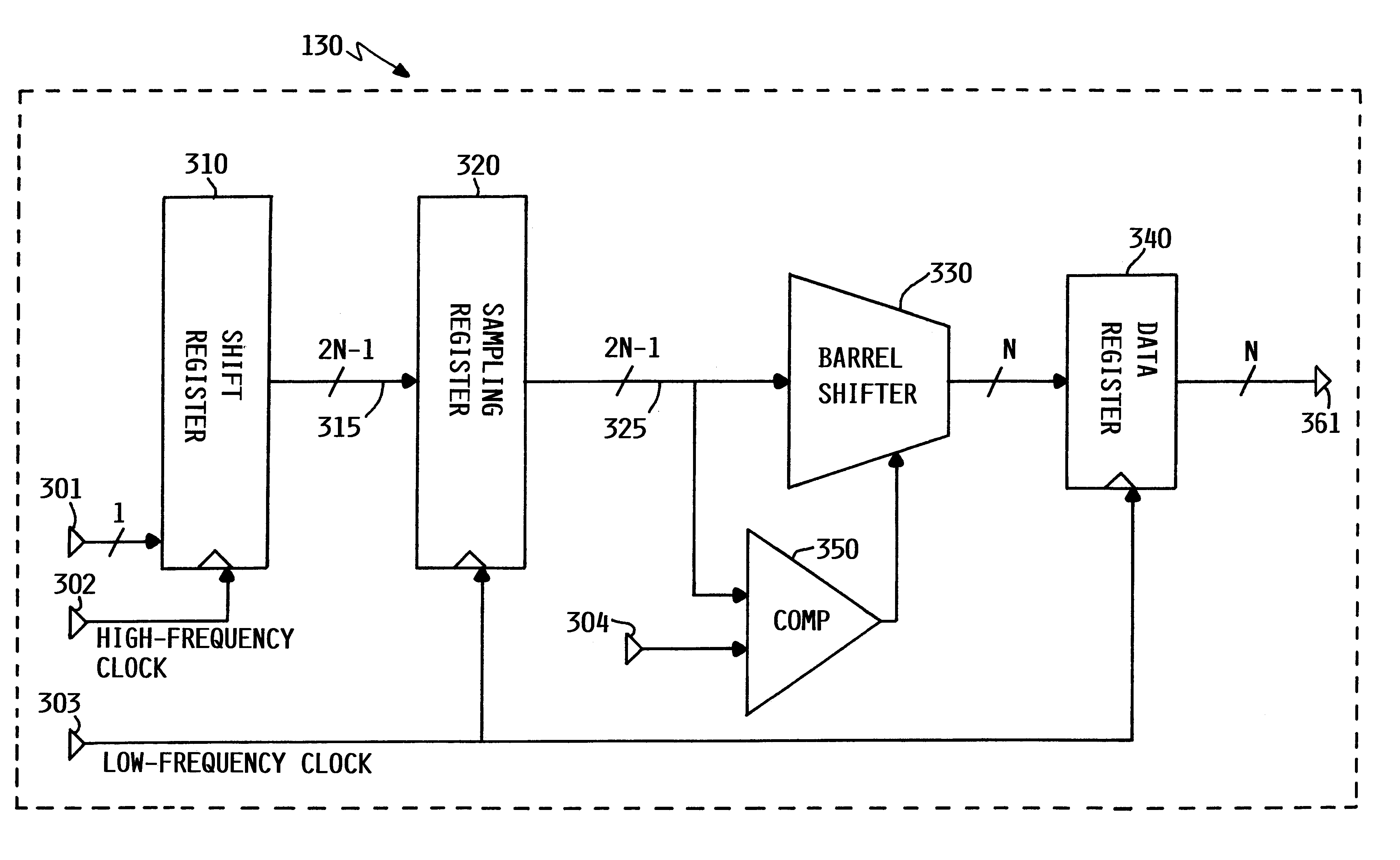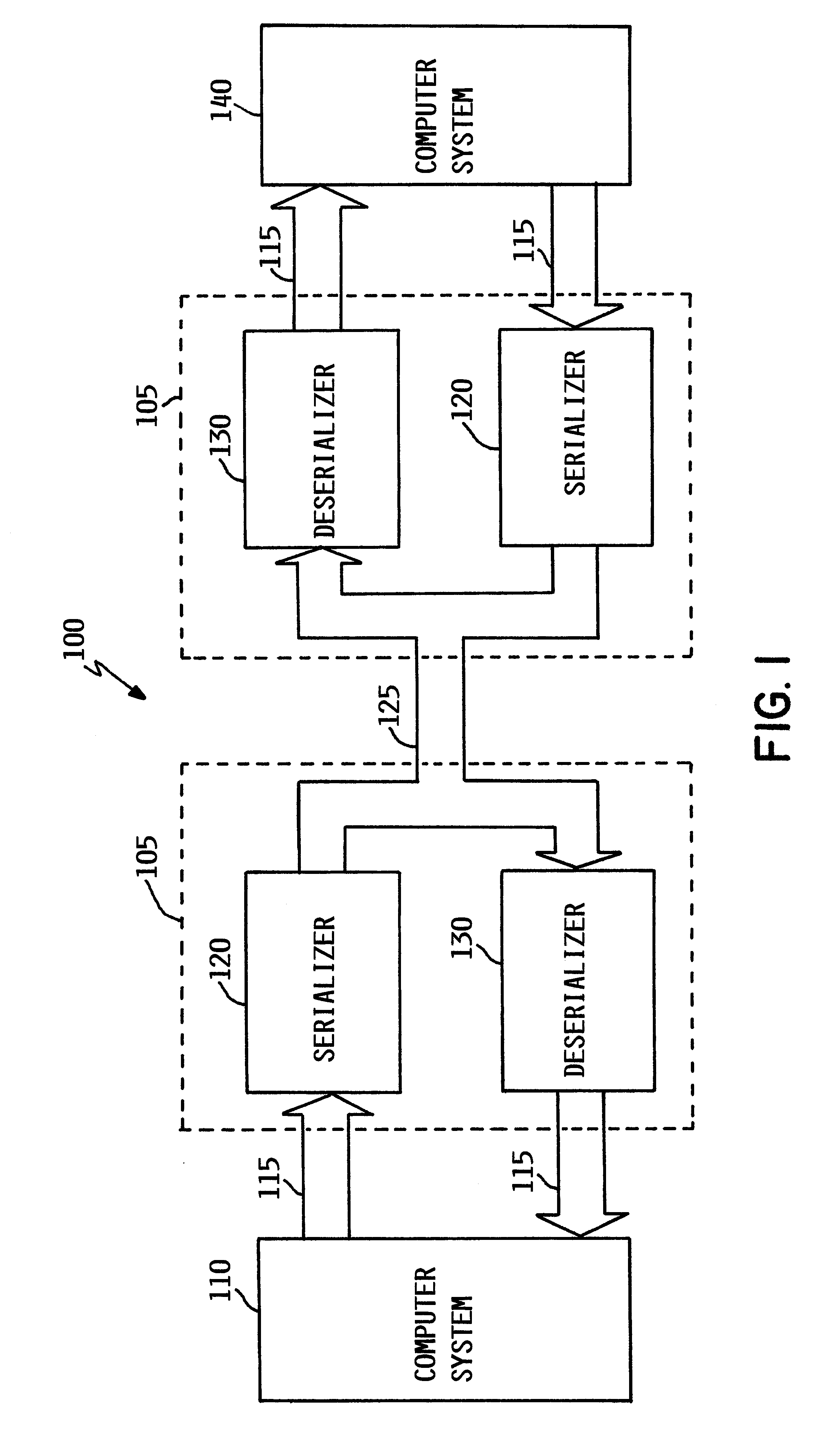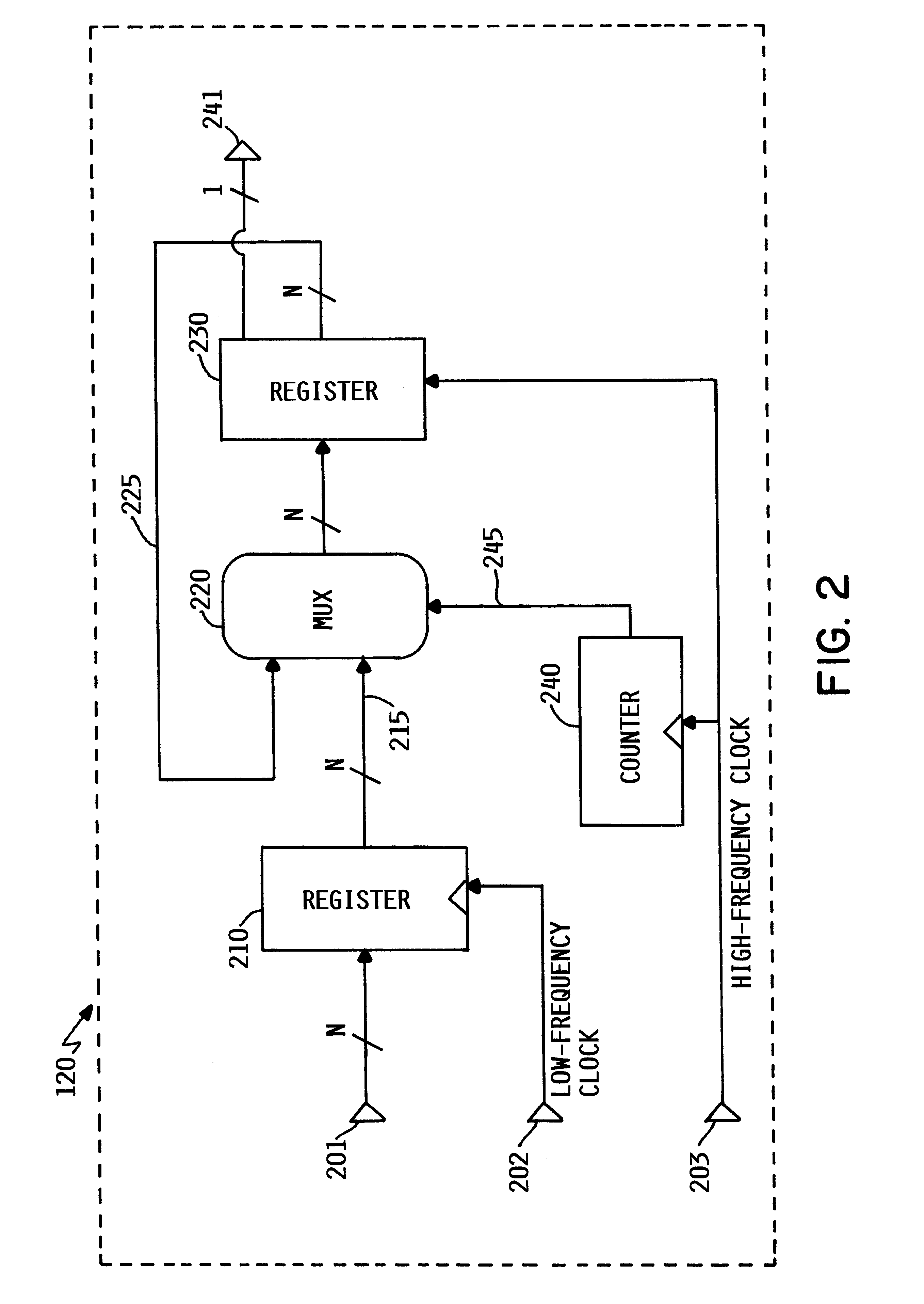Apparatus and method for optimized self-synchronizing serializer/deserializer/framer
a serializer and framer technology, applied in the field of computer systems, can solve the problems of affecting the design time of the integrated circuit, the inability to transmit data in parallel format over significant distances, and the inability to transmit high-speed serial data signals on the receiving end, so as to increase the design time of new products, the effect of reducing the cost of production and high data transmission speed
- Summary
- Abstract
- Description
- Claims
- Application Information
AI Technical Summary
Benefits of technology
Problems solved by technology
Method used
Image
Examples
Embodiment Construction
The present invention includes a serializer that receives parallel data input from a computer and serializes the data for transmission over a high-speed serial communication link. On the receiving end, the present invention provides a deserializer that can quickly and efficiently transform the serial data back into parallel form for use within the computer system on the receiving end. By utilizing two related clock signals, one clock signal being an integer multiple of the other, a self-synchronizing serializer / deserializer can be created. In addition, by using data buffers and data registers to increase the size of the data sample on the receiving end, the comparisons necessary to construct a parallel signal from a serial transmission can occur at a much lower frequency than the frequency of the original serial transmission. This feature reduces complexity and increases reliability. In the most preferred embodiment, the invention is provided as a integrated solution manufactured on...
PUM
 Login to View More
Login to View More Abstract
Description
Claims
Application Information
 Login to View More
Login to View More - R&D
- Intellectual Property
- Life Sciences
- Materials
- Tech Scout
- Unparalleled Data Quality
- Higher Quality Content
- 60% Fewer Hallucinations
Browse by: Latest US Patents, China's latest patents, Technical Efficacy Thesaurus, Application Domain, Technology Topic, Popular Technical Reports.
© 2025 PatSnap. All rights reserved.Legal|Privacy policy|Modern Slavery Act Transparency Statement|Sitemap|About US| Contact US: help@patsnap.com



